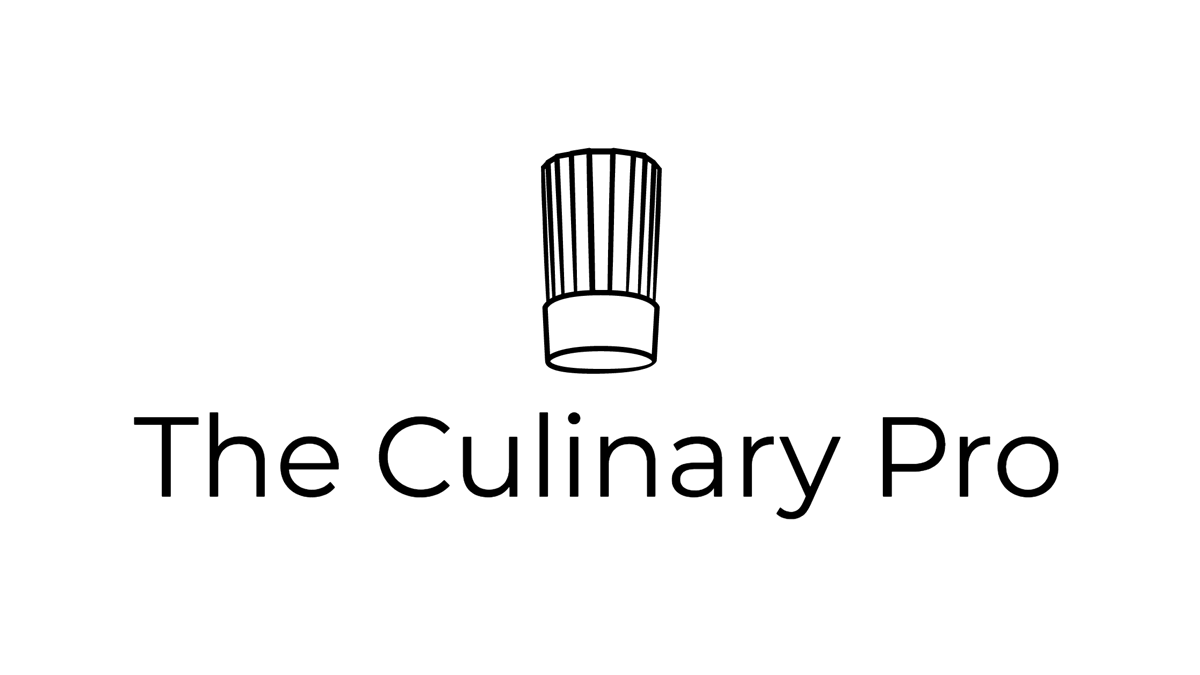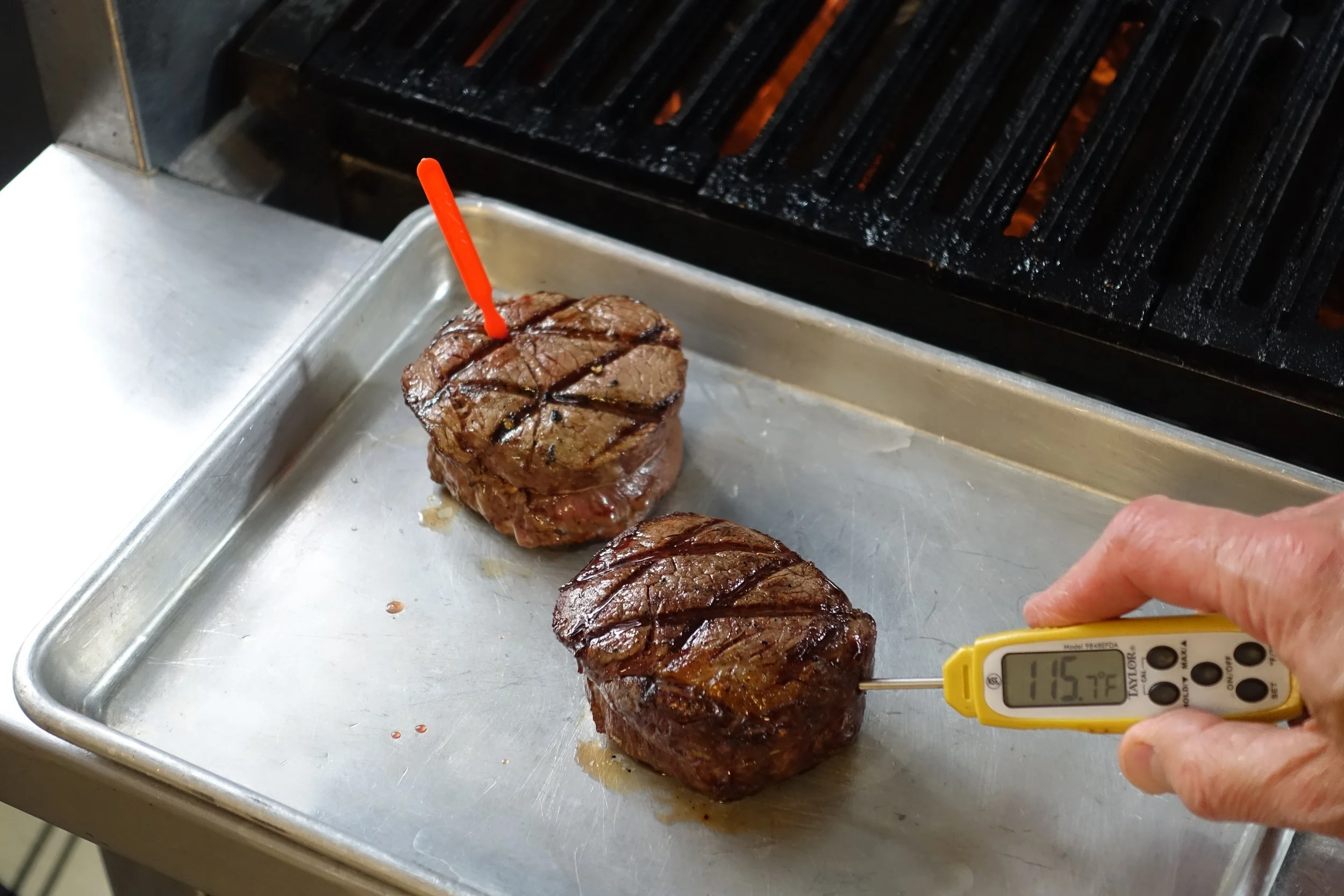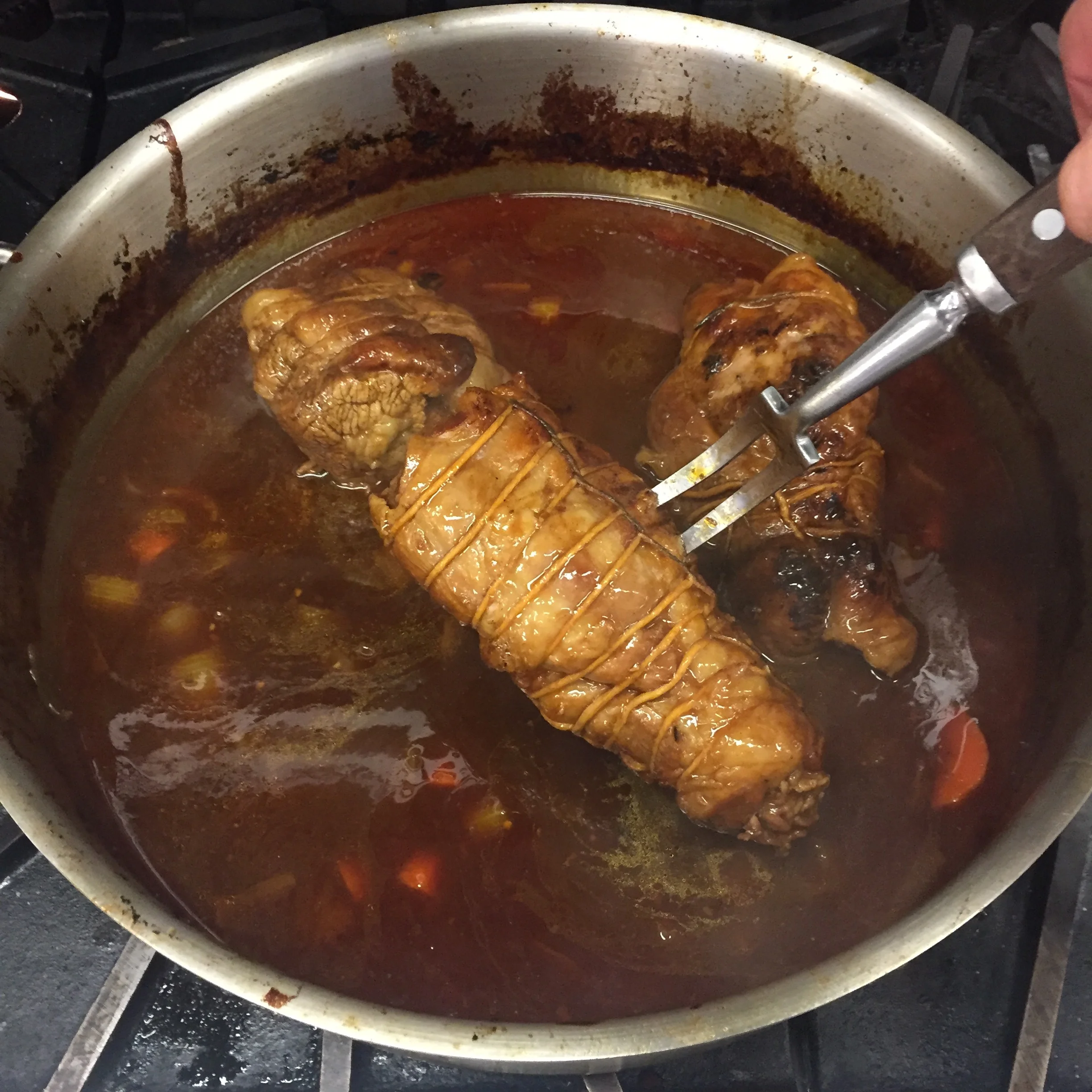The Science of Cooking Proteins
Animal proteins are mostly made up of water, so the cooking time and the temperature of the cooking medium affect their outcome. Cook them too much or too long, and they become tough and dry, plus their yield will be significantly diminished. Optimizing the cooking process will preserve the quality and integrity of the product without excessive moisture loss.
Some products are naturally tender, for example, a tenderloin steak, a fillet of salmon, or a chicken breast, and should be cooked minimally to retain moisture. Other cuts, including those from the shoulder, breast, and belly areas of beef and pork, require extended cooking time to achieve tenderness. By understanding the composition of meats, poultry, and seafood and the differences in the various cuts on a carcass, a cook can adequately prepare them for maximum tenderness, flavor, and moisture retention.
Marbling is Intramuscular Fat that adds Flavor and Juiciness
To determine the best techniques for cooking various cuts of meat, poultry, fish, and shellfish, it’s helpful to understand how muscle fibers, connective tissue, and fat content of the individual cuts react when subjected to heat. Meat and poultry muscles are made up of bundles of fibers, known as fascicles, bound by connective tissue in the form of collagen. Fats are dispersed as marbling or intra-muscular fat between the fibers, contributing to juiciness and flavor. Some fibers are fined grain, like those found in a tenderloin, and are relatively tender. On the other hand, tougher meat cuts, like beef brisket, have coarse and thick fibers.
Photos courtesy of the Beef Council
In general, meat and poultry cuts from muscles exercised more, like the legs and shoulders, will have course and tough fibers, while those from minimally worked muscles, loins, tenderloins, and poultry breasts will be tender. On the other hand, fish muscles are relatively tender because they have an easier life in the water than land-based animals. Fish collagen is layered between the folds of the muscle tissues and is weaker than animal connective tissue. This means that fish and shellfish, with a few exceptions, are naturally tender and require minimal cooking to make them palatable.
The Introduction of Heat
The texture of uncooked meat and poultry is soft and relaxed, but as heat is applied, the protein bundles begin to coagulate or denature, squeezing out moisture. Collagen within meat and poultry connective tissue begins to melt and gelatinize at about 140°F (60°C). As the proteins continue to expel moisture, they contract, toughen, and eventually dry. However, continued cooking will ultimately cause the proteins to break down and become tender again. Fish and shellfish proteins differ from meats and poultry because they coagulate at a lower temperature, generally between 120-130˚F (50-55˚C), and fats and gelatin in the muscles also melt at a lower point. Fish proteins lose moisture and become dry at 140˚F (60˚C). To conserve their texture and moisture, most fish and shellfish should be cooked no higher than 130˚F (50˚C).
Developing Flavor and Tenderness
Barding a Pork Roast
We often use tenderness to describe quality when eating meats and poultry. Tenderness is based on multiple factors, including the type of animal, the specific cut, and the cooking method. But it’s equally important to note that tenderness does not always equate to flavor. A tenderloin steak implies it is tender; however, this cut lacks the taste of an abundantly marbled T-bone steak. While poultry breast meat is lean and tender, the leg cuts are more flavorful and moist because of the fat concentration in this area. For meat and poultry cuts that lack fat and marbling, brining, marinating, and barding (wrapping in fat) are ways to add flavor and moisture during the preparation process.
Developing Color
The natural red color in meat comes from myoglobin, an iron- and oxygen-binding protein found in beef, lamb, duck, and tuna. Myoglobin occurs at higher levels in muscles used for walking or standing. White poultry, including chicken and turkey, also contain myoglobin concentrated in the legs but lack it in the breast area. Most fish lack myoglobin, with exceptions such as tuna.
Proteins take on a brown color when they are seared, roasted, or grilled, a reaction known as Maillard browning (named after the French chemist Louis Camille Maillard, who discovered it in 1912). This high temperature, searing above 275°F (140°C), adds color and flavor. However, if the temperature rises above 400°F (200°C), the surface begins to burn, giving it an unpleasant bitter taste and creating harmful carcinogens.
Pastured Meat and Poultry
The characteristics of naturally raised meats and poultry require some adjustment to the cooking process. Compared to conventionally grown animals, grass-fed cattle produce beef that can be leaner, dryer, and more robust in flavor, free-range chickens will have more connective tissue, and heritage pork breeds tend to be fattier. For grass-fed tender cuts of beef, cooking times when grilling or roasting can be reduced by as much as 30%. They should be cooked to no more than medium doneness (except for poultry). Brining or barding meats and poultry are recommended for added moisture, fat, and flavor. Marinating with wine, oil, and seasonings adds flavor and aids in tenderization. Slow-roasting methods for larger cuts of meat and whole poultry help tenderize and retain moisture. Braising and stewing at low temperatures will produce similar results. For dry-heat methods, including sautéing, grilling, and roasting, sear at high temperatures and finish at a lower temperature. Heritage breeds of pork will have more fat and marbling, so temperature and cooking times will be a little more forgiving, and even though they will be juicier, brining is still recommended.
Determining Appropriate Cooking Methods
Cooking methods for meat, poultry, fish, and shellfish are decided by the type of animal, the particular location of the cut on the carcass, the size of the cut, and the desired method or outcome. Depending on the cut of meat, beef, pork, veal, and lamb have similar cooking methods. A rib roast, for example, is cooked the same regardless of the animal. Generally, tender cuts of meat are cooked minimally using dry-cooking methods, including grilling, sautéing, or roasting. In contrast, tough cuts are cooked with moist heat methods like simmering, stewing, and braising. Poultry, including chicken and turkey, are relatively tender and are also cooked in similar ways. But some game birds, including pheasant, have tough legs that should be braised or stewed, while the breast is relatively tender and best when cooked to medium doneness. Fish and shellfish, with few exceptions, should be cooked minimally at lower temperatures than meat, regardless of the method.
Testing for Doneness
Doneness is judged by the type of protein (meat, poultry, fish), the specific cut, and the desired outcome (usually based on eating quality). When cooked, small tender cuts of meat or fish are often tested by the touch method of placing pressure on the item's surface with your finger. These items are cooked from rare-to-well-done temperatures. The temperature method gauged with a thermometer is used for steaks, large roasts of meat, poultry, or whole fish when a desired degree of doneness is required. Tough cuts that are braised, stewed, or simmered use the fork-tender method, in which the meat easily slides off the fork when done.
Touch Method for Small Cutlets and Fillets
Temperature Method for Steaks, Roasts, and Poultry
Fork Tender Method for Braises & Stews
Carryover Cooking
Remember that regardless of the mode of cooking or technique used for determining doneness, carryover cooking continues after the item has been removed from the heat source. This is due to built-up energy inside the food. Compensate for this by undercooking the product 5-10°F/3-6°C, depending on the size.
Proteins should rest for 5-20 minutes when removed from the heat source before cutting or carving to allow the juices to redistribute throughout the muscle. This is because heat intensity forces moisture away from the edges of the food and concentrates it in the center. If the item is immediately cut after cooking, the juices pour freely from the product, but when allowed to rest, the juices redistribute, retaining more moisture with less purge when carved.








